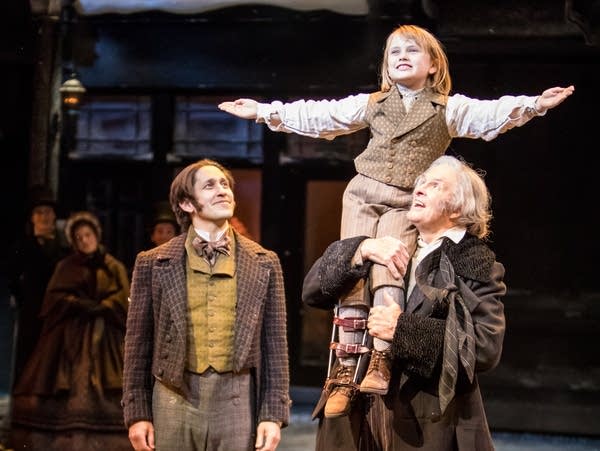Review: Should ‘Christmas Carol’ be relevant for Dickens’ time, or ours?

Go Deeper.
Create an account or log in to save stories.
Like this?
Thanks for liking this story! We have added it to a list of your favorite stories.
If you go to see this year’s production of “A Christmas Carol” at the Guthrie, you’ll have a great time. I saw it with my family and we were unanimously enchanted by the story, the characters, the sets, the costumes. So I felt like Ebenezer Scrooge on the drive home, when I observed that there was stuff in the play that Charles Dickens wouldn’t recognize.
Like what? Somebody asked.
Well, I said, for one thing, there’s Scrooge’s housekeeper, played with gusto by Emily Gunyou Halaas. There’s no such character in the original “Christmas Carol” — not in Scrooge’s lifetime, anyway.
There’s not?
Turn Up Your Support
MPR News helps you turn down the noise and build shared understanding. Turn up your support for this public resource and keep trusted journalism accessible to all.
No. Sorry.

And Scrooge’s nephew Fred? In the novel, he expresses his sympathy to Bob Cratchit, sure, but he doesn’t pay for anybody’s cemetery plot. Let alone invite all the Cratchits over for dinner. And the snow globe that gets passed down through all the successive iterations of the Scrooge character? Please. Snow globes weren’t even invented until around 1900, 60 years or so after “A Christmas Carol” takes place.
I had a similar conversation years ago with Dominic Papatola, the former theater critic of the Pioneer Press, and he said something that haunts me still: “Dickens is dead, to begin with.” Which was clever because it put me in my place while paraphrasing Dickens himself, who opened his story with the words, “Marley was dead: to begin with.”
Papatola helped me understand something that I guess has been slow to sink in: a hidebound devotion to the classics, inflexible and fixed in time, does no one any good. If theater and literature and all our other art forms are to remain relevant and interesting to new and younger and different audiences, then people like me might have to get out of the way. Or at least learn to keep our mouths shut.

And here’s a case in point. Another thing that Dickens wouldn’t have recognized, and might not have approved, is the happy, unremarked diversity that pervades this production. Practically every family that crosses the stage is blended in one way or another. And I’ve never been sure what Dickens meant by “In came the cook, with her brother's particular friend the milkman,” but in the Guthrie production, the meaning is obvious. And celebrated.
Something else I learned on the car ride home is that nobody likes a smarty pants, especially during the holidays. Come to think of it, I don’t either. There’s still time — go see “A Christmas Carol,” at the Guthrie through Dec. 29. You’ll love it.


